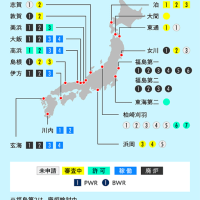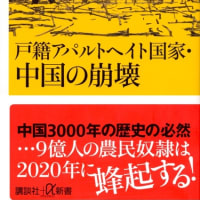05/12/2012 Dr. Arnie Gundersen
Fukushima Daiichi ; ""The Truth and the Future""utu. / Dr.Arnie Gundersen
http://www.fairewinds.com/content/fukushima-daiichi-truth-and-future
dis utu turns to sentence.
Maggie Gundersen: Hello Mr. Hirose and hello people of Kansai. I am Maggie Gundersen. I am the President and the founder of Fairewinds Associates and the founding director of Fairewinds Energy Education non-profit.
I am here today with Arnie Gundersen, my husband, and Chief Engineer for Fairewinds Associates. We are here today to talk to you about the triple meltdown at Fukushima-Daiichi. We hope to answer all your questions. I wish we could have joined you in person, but I thank you for watching this video and please send us any follow-up questions. We will be happy to answer them. Now let's bring Arnie into this conversation. Arnie, how dangerous is the situation now at Fukushima-Daiichi Unit 4, particularly in Japan with its continuous danger of earthquakes and seismic activity and chance for an additional tsunami.
Arnie Gundersen: Unit 4 has always been my biggest concern. If you watched our website on the very first week of the accident I was saying that if Unit 4 were to catch fire, you would have to evacuate Tokyo. As a matter of fact the book that we wrote talks about that a lot. It is really important and it remains the biggest concern that I have about the Fukushima site. Unit 4 has more fuel in it than any of the other units in the complex, but more importantly it has the most recently used nuclear fuel. And all of that fuel is outside of the containment. So that would make it dangerous enough. Except that also, of course, Unit 4 has had a series of explosions and is weakened structurally. Before it might have withstood a 7.5 earthquake. I believe that the structural damage to Unit 4 is so great that if there is a 7.5 earthquake, it will not withstand it.
Here is what would happen if Unit 4 were to crack and the water were to drain out of the nuclear fuel pool. The fuel is hot enough that it needs to be water-cooled. If air is all there is cooling the fuel, it will burn. It will burn the zircaloy cladding on the fuel, (and) will react with the oxygen to create a fire. And it is a fire that once it starts, cannot be put out by water. Water would make it worse. So the nuclear fuel would have to burn completely before the fire would ever go out.
In the process, all that radiation would go up into the atmosphere and blow all over Japan and all over the world.
There is as much cesium in the fuel pool at Unit 4 as there was in all of the atomic bombs dropped in all of the tests in the 1940's, the 1950's, the 1960's, and into the 1970's. All of the above ground testing has less cesium in it than is in the reactor pool at Fukushima 4 right now. So it is a grave situation. I don't believe that the Japanese Government is moving fast enough. If there is no earthquake, the plan to remove the fuel slowly is going to be adequate. But we cannot wait on Mother Nature. We have to quickly move that fuel out of that pool and onto the ground. The key here is quickly. The Japanese Government finally just this month came up with a plan to build a building around the fuel pool building and begin removing the fuel in 2013 or 2014.
I said that that is what they needed to do on the Fairewinds site in an interview with Chris Martenson a year ago. These things have been evident, but TEPCO is not moving fast enough and the Japanese Government is not pushing TEPCO to move fast enough either. I think the top priority of TEPCO and the top priority of the Japanese Government should be to move the fuel out of that pool just as quickly as possible. And in the meantime, they need to strengthen that pool to make sure that it can withstand an earthquake. Remember, that pool is not in a containment. You can look down in a satellite and see the nuclear fuel. The roof is blown off. And that is what makes it dangerous.
In America, we had the Brookhaven National Laboratory do a study to examine what would happen in a fuel pool fire. Brookhaven National Labs determined that there would be 187,000 people who would develop cancer from a fuel pool fire. It is a serious concern and I do not believe that Tokyo Electric and I do not believe that the Japanese Government is taking it seriously enough. For the last year I have been working with Akio Matsumora and finally it appears that the world community is listening to Akio Matsumora's concerns about the pool. We need to tackle this as a concerned world community and encourage the Japanese Government and encourage Tokyo Electric to solve it quickly.
Maggie Gundersen: Arnie you mentioned cesium in your earlier discussion. Why is it important? What is the health effect of cesium and are there any other radioactive isotopes that would have been released during the triple meltdown?
Arnie Gundersen: Cesium is one of many radioactive isotopes that are created in a nuclear reactor. It has got a 30 year half life which means that it hangs around for 300 years and biologically it mimics potassium. You might remember that if you have a muscle cramp, you eat a banana and it goes to your muscles and relieves the cramp. Well, cesium also goes to your muscles. It is called a muscle seeker. When it goes to your muscles, it can cause cancer, but it can also cause a variety of other illnesses.
The Brookhaven study only looks at cancer. It does not look at all the other things that radioactive cesium can do. In young children with rapidly developing muscles, especially their heart muscle, it can create something called Chernobyl Heart which is damage to the heart muscle, which once it is damaged, never ever recovers for the life of the child. So cesium is just one of many isotopes, but it is relatively easy to measure and also biologically causes almost the most damage of any of the other isotopes that are in that reactor.
Maggie Gundersen: Arnie, you have said that you believe the explosion at Unit 3 was a prompt criticality. What is a prompt criticality and why do you believe that?
Arnie Gundersen: I developed my concern about a prompt criticality because of the nature of the explosion in Unit 3. Unit 1, when it exploded, blew sideways and with relatively low energy. You can measure the rate at which it moves and it moves less than the speed of sound. And that is called a deflagration. It does not do anywhere near as much damage. When I looked at the explosion on Unit 3, however, it was entirely different. You can see it, it is not hard to see. It is called a detonation. The speed at which Unit 3 exploded was faster than the speed of sound. And the important thing is not how Unit 3 exploded. What is the most important thing is that it exploded with a detonation, not a deflagration. The nuclear industry is not paying attention to this now, but it should be, because a nuclear containment can handle the slow moving deflagration, but it cannot handle the fast moving detonation. The Nuclear Regulatory Commission and the international community are absolutely ignoring the fact that a detonation occurred in Unit 3.
Well how did a detonation occur? That was the question I asked myself. I checked with chemists and atmospheric pressure and hydrogen will not create a detonation. Like on Unit 1 it will only create a deflagration. So I needed to figure out how a detonation could occur. But there are a couple of other clues here. One clue is that the Nuclear Regulatory Commission way back in March of last year, wrote a report that is on our website, that talks about nuclear fuel being deposited on the site and nuclear fuel being discovered as far away as two kilometers.
How can nuclear fuel get blown out of a nuclear reactor? The fuel that is inside the reactor is also inside the containment and there is no indication of a massive containment failure and a massive reactor failure that could have thrown the nuclear fuel out. So I had to come up with a reason that the nuclear fuel could have been released in pieces, not little fine atoms, but in pieces which is what the Nuclear Regulatory Commission says was discovered.
The only way that could happen is if the explosion occurred in the fuel pool at Unit 3. Now if you look at the video of Unit 3, the very first frames show the explosion occurring on the side of the building and that is the side of the building that has the nuclear fuel pool. It started on the nuclear fuel pool side and then worked it's way up into the massive cloud that you see. So what could have caused that? That is the question. Hydrogen would have been above the nuclear fuel, it would have been a gas above the nuclear fuel and if it had exploded, it would have pushed the nuclear fuel down.
That is not what happened. Remember, we have fuel fragments found off-site. Something had to lift the nuclear fuel up. The only thing I could determine is that it was a criticality in the fuel pool that caused the fuel to lift up. The division I ran built nuclear fuel racks for boiling water reactors exactly like Fukushima. The dense fuel racks that are now in every reactor everywhere are very close to becoming critical anyway. And in the accident situation where there was seismic event and explosions occurring, it is likely that they were very near to becoming critical. And what that means is that they were very near to becoming a self-sustaining nuclear chain reaction.
Way back in college 40 years ago, we watched a movie called the Borax Experiment. You can find it on the web today. The explosion at Borax was a prompt moderated criticality. It looks almost exactly like the explosion in Fukushima unit 3. So an image I had from 40 years ago led me to conclude that the same thing happened in Unit 3. That a criticality occurred in the fuel pool and it pushed some of the nuclear fuel up into pellets and the pellets wound up scattered around the site.
Now, the criticality is called prompt moderated criticality. It is not a bomb. A bomb is a prompt fast criticality. This reaction occurs slower than a bomb, but faster than what occurs inside a nuclear reactor. The Borax experiments were designed to test just how violent that reaction could be. I think if you look at Borax and compare it to Fukushima Unit 3, you will see that there are an awful lot of similarities.
Again this is a theory, but it is the only theory that accounts for the explosion occurring on the side where the fuel pool is, and it is the only theory that creates the uplift force that caused the fuel particles to be thrown about the site and discovered as far as 2 kilometers away.
Well there is one more piece of evidence and that is that the roof over the fuel pool has been totally destroyed whereas the roof over the nuclear reactor and the containment, collapsed downward. We talk about that in a video on the site as well and I think that is another important indication that whatever it was that caused the fuel to lift occurred on the fuel pool side of the building, and not in the middle where the nuclear reactor was.
The videos after the accident and after the explosion show containment leaks as well. You will see in the weeks afterward, steam coming from the center of the building. And I believe that the containment lid lifted on Unit 3 and never went back down straight, so it has lifted and twisted sideways and radioactive gasses are lifting from that containment lid. But there is not enough evidence to say that that is what caused the explosion that we saw during the accident. The jury is still out and will be for 10 years until we get inside the Fukushima reactor to see what the damage is. But right now, I think my theory accounts for the damage, the speed of the shock wave, and also the fact that the contamination has been found as far away as 2 kilometers.
Maggie Gundersen: Arnie, let's talk about the Unit 4 spent fuel pool. There have been a lot of questions about that and a lot of concerns right now. Was there a hydrogen explosion at the Unit 4 spent fuel pool and if there was, what is a hydrogen explosion and why would it have occurred there?
Arnie Gundersen: One of the biggest mysteries at Fukushima is how did Fukushima Unit 4 explode? There are a couple of very, very grainy videos that clearly show it did explode. It was a different type of explosion and perhaps a fire and an explosion that went on for a period of days. So exactly how it did explode is one of the big questions about the Fukushima accident.
There are 3 competing theories. Tokyo Electric says that the radioactive gasses over in Unit 3 went through a pipe that connected Unit 4 and entered Unit 4 causing Unit 4 to explode. So Tokyo Electric's position is that the radioactive hydrogen that was created in Unit 3 went through a pipe, entered Unit 4, and there it exploded. There is one piece of evidence that supports that. There is some contamination in some filters in Unit 4 that would indicate that gasses did come from Unit 3.
So that is a possibility, but I do not think it is accurate because I believe that the containment was so damaged on Unit 3, that there was no pressure to push those gasses into Unit 4. I can't understand how the gasses, what the mode of force was to push those gasses into Unit 4. I think the hydrogen explosion came from something in side Unit 4 itself. There are two possibilities there.
One is by Dr. Gen Saji and it is an excellent analysis. He believes that the hydrogen in the water in the pool that was dissolved because of the radiation in the pool over months and months and months, was enough to cause the building to explode. As the water got hot in the fuel pool, it liberated the hydrogen that was in the water and that hydrogen was enough to cause the explosion.
The second possibility, and this is my theory, early on in the accident, there is some video that is up on our site, that shows that the top of the fuel racks were exposed to air. I am not suggesting that the entire fuel pool ran dry. But the top of the nuclear fuel I believe was exposed to air and I think the photos show that. So if the top of the fuel was exposed to air, it is possible that a reaction could have occurred at the top of the fuel that would have created enough hydrogen to blow the building up.
Dr. Saji and I agree that the hydrogen came from the Unit 4 fuel pool. He believes it was dissolved in the water. I believe it came from the fuel. Only time will tell when we get in to analyze the reaction. But there is an important lesson here that the nuclear industry is not taking into account. And that is the fuel pool temperature. The fuel pool is a large pool and it can boil locally. And that is something the Nuclear Regulatory Commission and the international community is not looking at. You can get local boiling in a pool even though the bulk temperature of the pool may be at 80 degrees Celsius. In portions of the pool, it can be boiling. That supports Dr. Saji's comment that as it boiled it would liberate hydrogen, even though the bulk temperature never ever exceeded boiling.
My theory is that I do believe that the entire pool had drained to the point where there was boiling occurring. But the real issue here is that the nuclear industry is not looking at the fact that localized boiling can occur even though the bulk temperature might be less than 100 degrees centigrade.
That is an important distinction moving forward. We have about 23 of these Mark I reactors in the United States and there are another 10 or so around the world. I think that we need to design these pools so that the hydrogen generated by dissociation can be accommodated without exploding the building. No one ever designed for that because no one ever anticipated it happening. But it did happen at Unit 4 and we need to prevent that in the future. Not just on these Mark I reactors but on the 400 reactors that all have fuel pools that are all susceptible to that identical type of failure.
Maggie Gundersen: Arnie, I want to follow up with a few more questions. In your discussion of Unit 4, you have talked about its hydrogen explosion. Is there any chance of a prompt criticality or a hydrogen explosion now at Unit 4? Would anything cause it to release more fuel or more radioactivity?
Arnie Gundersen: The fuel in the fuel pool at Unit 4 has now been cooled for about a year after the accident and it had been removed a couple of months before that. So the fuel is becoming cooler. It still needs to be water-cooled for another 2 years, but it is much cooler than it was at the beginning of the accident. So the chances of hydrogen generation are much, much lower now than when the accident occurred. So I do not believe that we are going to see an explosion in the pool now, no matter what happens.
My biggest concern is that if the pool loses water, then it is an entirely different story. So if there is a large seismic event that causes the building to topple, or the pool to crack and the water to drain out, there is not enough cooling in the air of that fuel, and it will start to burn. Now the consequences of that are depending on which way the wind is blowing, it could mean the evacuation of Tokyo as a worst case. It could also mean cutting Japan in half so that the northern part is separated from the southern part by a band of contamination. So this is a very serious accident waiting to happen and we just all have to pray that an earthquake does not happen before that fuel is removed.
Maggie Gundersen: Arnie, compared to the accident at Three Mile Island and Chernobyl, how dangerous are the radioactive releases from the four reactors at Fukushima-Daiichi?
Arnie Gundersen: Three Mile Island was a level 5 accident and Chernobyl and Fukushima are level 7 accidents. That means roughly that Three Mile Island was a 100 times less than the accident at Chernobyl and the accident at Fukushima. People did die as a result of the accident at Three Mile Island. The Nuclear Regulatory Commission says no, no one died, on their web page. But the evidence is clear that there was an increase in cancer. I refer you to Dr. Steve Wing's report that is also on our site that talks about it. And in addition some reports coming out of the University of Pittsburgh indicate just now that we are beginning to see leukemia as a result.
So while Three Mile Island was much less than either Chernobyl or Fukushima, people did die as a result of the radiation released. At Fukushima-Daiichi the evidence tells us that at least three times more radiation in the form of noble gasses were released from Units 1, 2 and 3 than from Chernobyl. We have seen radioactive gas clouds, noble gas clouds to the northwest, that are much worse than we ever anticipated to have been released. So we know that the noble gasses were larger than Chernobyl. Now iodine, which is another gas that is released, and also cesium and other gasses, seem to be roughly on the same level as the releases from Chernobyl.
There are 2 issues here. As terrible as it is, it would have been much worse but for 2 things. The first is that most of the time the wind was blowing out to sea. And of course Chernobyl was surrounded by land, so whatever way the plume meandered after Chernobyl, it contaminated the land. So when we compare Fukushima to Chernobyl, the total releases from Fukushima are likely higher than they were at Chernobyl, but because most of it blew out to sea, that is a good thing for the Japanese people.
The second important thing that happened that was lucky, if we can call it luck in such a severe accident, was that it happened on a Friday and not on a weekend. There were a thousand people at the Daini site and at the Daiichi site, because it was a weekday, who could respond to the accident. If it had happened on a weekend, there would have been a small crew of people there and the accidents at both sites would have been much much worse. Now that has an implication worldwide, because on weekends and in the evenings, we have very small crews at these nuclear reactors. And should there be a major accident, there is no way to respond quickly enough with the small crew of people that are working on the shifts, other than the main shift in the middle of the day.
The international community needs to look at that and it is not a matter of well, we can get people there in a half a day. That is too late. The staff on site has to be larger at the beginning of the accident to mitigate the potential for a serious accident. But yet it all boils down to money. The utilities that run these power plants really do not want a large staff because they have to pay for it. But in fact, it was the large staff at Daiichi and the large staff at Daini that likely saved the world. So the important take-away here is that the releases from Fukushima are as serious if not more so than Chernobyl. And that they would have been much worse if the accident had happened on a weekend.
Maggie Gundersen: Arnie, thank you. How significant is the danger of hot particles and why?
Arnie Gundersen: I am really concerned about the hot particles that were released after the Fukushima accident. Now a hot particle is more than just a single atom. An atom of cesium decays once and it is over, it is no longer radioactive. A hot particle though, contains thousands or hundreds of thousands of atoms of cesium or other radioactive material and they, of course, decay for many, many years and decades.
So if a hot particle is lodged inside you, either in your lung or in your liver or in your gastrointestinal tract, it can cause a constant bombardment of radiation over a long period of time to a very small localized part of your tissue. And that is exactly the conditions that can cause a cancer.
So we have seen in Mr Kaltofen's analysis to the American Public Health Association: he shows what an air filter looked like in a car in Fukushima and what an air filter looked like in a car in Tokyo. Those air filters are no different than our lung, our lung acts as an air filter, and that causes that radiation to get trapped in our lungs or in our livers or elsewhere in our bodies, and will constantly, over decades, cause cellular damage. It is particularly a concern in young children because they have a longer life, and because their cells are rapidly developing. So it is important that we monitor the children at Fukushima and throughout Japan over the next 3 or 4 decades to make sure that they do not develop cancers as a result of the hot particles that were released from Fukushima-Daiichi.
Maggie Gundersen: So Arnie, in closing, what do you want people to remember from your review of the accident at Fukushima-Daiichi?
Arnie Gundersen: About a month before the accident, we were walking and we were talking about an accident and where it might occur. And I said I did not know where it would occur, but I thought it would occur in a boiling water reactor of the Fukushima design, I said a Mark I reactor. And it turned out to be true.
But I think the bigger lesson from Fukushima is that this is a technology that can destroy a nation. After Fukushima I was reading Mikolai Gorbachov's memoirs and he says it was the Chernobyl accident, not Perestroika, that destroyed the Soviet Union. So we had that information for 30 years but yet we really did not realize that it could happen elsewhere. So we know that the accident at Chernobyl was a cause in the factor of the collapse of the Soviet Union. And we know that the cost alone from the Fukushima-Daiichi accident will easily go to a half a trillion US dollars over the next 20 years. That is enough to bring Japan to its knees.
Japan is at a tipping point. You have an opportunity here to change the way we use energy. Or Japan can go back and turn on all its nuclear reactors again and continue business as usual and of course risk another accident. So you have a choice, you have the opportunity to change the way you use energy and to change the way you distribute energy. You can create smart grids that share power from the north to the south and from the east to the west, where the frequencies are different. We can distribute our generation, instead of having massive power plants in locations like Fukushima-Daiichi and Fukushima-Danai. We can distribute those power plants throughout Japan, throughout the world, with windmills, with solar power, with conservation and with distributed small sources of generation.
Those are all one way of doing it compared to the other which we are presently using, which is central station power. We needed central station power in the 20th century. Now with computers, we do not need central station power anymore. We can do it another way. And Japan can lead the way if it chooses to. If it leads the way, it will have an export commodity that the rest of the world will want desperately. You have an opportunity here to change your country. And you also have a business opportunity here to sell to the rest of the world a product that we all desperately need.
So the Fukushima-Daiichi accident is the worst industrial accident in history: it is a half a trillion dollars. But it also can be an opportunity for Japan to change the way it does business and to create the economy for the 21st century and beyond with distributed generation and smart grids. I hope you choose that choice. Japan is at a tipping point and it is your choice to make.
Thank you.
05/12/2012
"フクシマ 真実と未来"utu.:dis utu turns to sentence.
3号機臨界爆発映像と4号機爆発の解析 ガンダーセン氏
Fukushima Daiichi ; The Truth and the Future. utu. / Arnie Gundersen
http://www.fairewinds.com/content/fukushima-daiichi-truth-and-future
dis utu turns to sentence.
Magie Gundersen:
こんにちは 広瀬さん。関西のみなさん、こんにちは。
非営利団体のFair winds Energy Educationの設立者で、代表のマギー・ガンダーセンです。
私の夫、主任エンジニアのArnie Gundersenが、トリプル・メルトダウンした福島第一原発の解説を致します。
みなさんがこのビデオをご視聴いただき、ご質問がございましたら当方にご連絡いただければ、ありがたくお答えしたく存じます。
Magie Gundersen:
「福島第一4号機はどの程度危険ですか?また地震や津波に襲われる可能性がありますが。」
Arnie Gundersen:
4号機は最大の懸念事項です。火災になったら東京から逃げなさいと、本にも多くを書きました。
未だに福島原発において、大変憂慮すべき事です。
4号機は、他よりも保管してある核燃料が多い。使用後すぐの核燃料もある。
しかも核燃料は、格納容器には納まっていない。これだけでも、十分に危険過ぎます。
M7.5の大きな地震が起きたら、4号機建屋はもたないでしょう。
使用済み核燃料は、常に水冷する必要がある。空気に触れれば、ジルコニウム被覆管が燃える。
いったん燃え上がれば、水を掛けることが出来無い。水を掛ければ悪化します。
核燃料は、炎が消えるまでに完全に燃やしつくされることになり、放射性物質は大気中に放出拡散し、日本をそして世界を覆うでしょう。
今までに人類が行なった核実験で出た放射能の総量よりも、福島原発4号機プール核燃料の放射能の総量は多いのです。(しかも4号機だけで)
これは非常に大変な状況で、日本政府が早急に移動できるとは思えません。
いつ地震がくるとも限らないので、できるだけ早く燃料を取り出して移動しなければなりません。
重要な所は、スピードだが、日本政府は、2013-14年に4号機を別の建屋で囲い燃料を移動する計画を発表した。
4号機の核燃料移動は最優先事項であるが、東電・政府の動きは遅すぎます。
4号機の核燃料移動は最優先事項です。
同時に、地震に耐えられるように、4号機プールを強化することです。
核燃料プールには、覆いがなく露天状態です。これは危険な状態です。
ブルックヘブン国立研究所の報告では、18万7千人がプールの火災により発ガンすると指摘されている。
東電も日本政府も深刻に考えていないのが問題です。
昨年、共に働く機会のあった松村昭雄氏の4号機プールを憂慮する主張が、世界でやっと理解された。政府・東電に早急に対応するようにお願いしたい。
Magie Gundersen:
「セシウムの危険性と放出された他の放射性同位体については?」
Arnie Gundersen:
セシウム137の半減期は30年、つまり放射性が無くなるまでの300年間は危険です。
セシウムは、カリウムと間違えて体内に取り込まれる。筋肉に蓄積されガンやいろいろな異常を引き起こす。
ブルックヘブン国立研究所の報告は、ガンの死亡数の研究であり、放射性セシウムがいろいろな病状を引き起こすことは考慮していない予想死亡数です。
幼い子供達は、セシウムが心臓にはいるといわゆるチェルノブイリ・ハートとなり、一度心筋にダメージを与えられると一生回復できなくなる。
他の放射性同位体が、引き起こす問題の大半をセシウムは生じさせます。
Magie Gundersen:
「3号機爆発は即発臨界によるものというが、その根拠は?」
Arnie Gundersen:
1号機の爆発は音速以下で、爆燃(deflagration) が起きました。
3号機の爆発は全く異なり、爆轟 (detonation)です。爆発速度は超音速です。
どう爆発したかより、爆轟(detonation)であったことが重要な点です。
格納容器は、爆燃は耐えられても爆轟(detonation)には耐えられない。
原子力業界はこの事実を無視しているが、3号機で、爆轟(detonation)がおきたのは重要な問題です。
ではどうして爆轟が起きたのでしょう。水素爆発では爆轟は起きません。ヒントは2つあります。
NRCの昨年3月の報告では、2キロ先で3号機から飛散した燃料破片が見つかったとある。
炉心、格納容器が壊れて破片が飛散したとすれば、汚染がもっとひどいはずです。つまり、3号機の核燃料プールからの核燃料に違いないでしょう。
ビデオが示すように、3号機の核燃料プールの位置で爆発が起きています。どうやって起ったのかが問題です。
建屋天井付近に溜まった水素が爆発したなら、下向きに圧力が加わるはずです。これでは破片は外に飛ばない。
何らかの力が、核燃料破片を上昇、飛散させたのです。
プール内で即発臨界爆発が、核燃料破片を上昇、飛散させたに違いないでしょう。
核燃料を、ラックにぎっしり詰めているので臨界は起きやすい。
3号機の爆発は、40年前のBORAX実験の爆発に似ています。
BORAX実験の爆発は、即発モデレート(緩和)臨界です。
3号機の爆発とまったく同様の爆発です。
左の画像は40年前のBORAX実験の爆発映像。
まったく同じ爆発が3号機で起きたと結論しました。プール内で即発臨界爆発が、核燃料破片を上昇、飛散させた。
即発モデレート(緩和)臨界は、核爆発ではありません。
核爆発は、即発ファースト(急速)臨界。
この即発臨界の連鎖反応は核爆弾よりは遅いが、原子炉の臨界より速い。
BORAXの爆発は、どの様に破壊の影響あるか試した実験でした。
BORAX実験の爆発と3号機の爆発を見比べれば、多くの相似がわかります。
私の推論ですが、プール内で即発臨界爆発が核燃料破片を上昇、飛散させたのです。
もう一つは、プール上部の屋根が完全に吹き飛んでいることです。原子炉上部の屋根は残っている。つまり、プール内で即発臨界爆発が起ったのです。
格納容器の上蓋が内部圧力によって持ち上げられ、隙間から放射性ガスが吹き出した。しかし、それがあの爆発を引き起こしたという証拠にはなりません。
1、3号機の爆発速度の違いと、NRCの昨年3月の報告で2キロ先で3号機から飛散した燃料破片を発見したと言うのが、この推論のもとなのです。
Magie Gundersen:
「4号機の水素爆発について。どうやって起きたのですか?」
Arnie Gundersen:
福島の事故で最も大きな謎は、どうやって4号機の爆発が起きたのか。東電は3号機から配管を通って来た水素で、4号機が爆発したと主張している。可能性のひとつだか、私は疑っています。
なぜなら、3号機格納容器は壊れていて、4号機に水素を押し出すほどの圧力はなかっただろう。
水素爆発の原因は、4号機建屋内にあったのです。2つ考えられます。
佐治博士の説は、プールの水が分解して水素が発生した。水温が上がり水素が上昇して爆発した。
もう一つは私の説だが、プール内燃料の上部が一部露出し、空気に触れて水素を発生し爆発した。
佐治博士は、プール水が分解し水素発生。私はプール内核燃料から水素発生と、4号機で水素が発生したと共通の見解です。
原子力業界は全く考えていないが、佐治博士のコメントの様にプール水温が80度でも部分的が沸騰することはあり得ます。私の説だが、プールが部分的に枯れ、沸騰が起った。
原子力業界は全く考えていないが、プール水温が100度以下でも部分的に沸騰することはあり得るのです。
世界中に数十機もあるマーク1型原発だけでなく、400機の原発で建屋内に核燃料プールのある設計のものは、4号機プールで水素爆発が起きた失敗を真剣に考えて、防止する手立てを打たねばなりません。
Magie Gundersen:
「4号機プールで即発臨界が起きた可能性は?また4号機が放射性物質を放出する可能性は?」
Arnie Gundersen:
1年以上経っているので、事故直後に比べ燃料の温度は下がっているが、もう2年は、水冷が引き続き必要です。
事故発生時と比べ、水素が発生して爆発する可能性は低い。
最大の懸念はプールの水がなくなることです。
大地震などが起り、プールに亀裂が走って水がなくなる。燃料がむき出しになって燃え出す。それが一番恐い。風向き次第で最悪、東京も避難が必要になります。
放射能汚染地区を放棄することにより、日本が2つに分断される可能性もあるのです。
深刻な事故が有り得るので、燃料を取り出すまで地震が起きないよう、神様にお祈りするしかないでしょう。
Magie Gundersen:
「スリーマイル島、チェルノブイリと比べて放射能の危険性はどうですか?」
Arnie Gundersen:
スリーマイル島事故で死者はいないとNRCは言っているが、証拠ははっきりしていて、実際はガンが増え亡くなっています。スティーブ・ウィング博士の報告が当サイトにもあります。
ピッツバーグ大学の報告では、今になって白血病の増加が認められるとある。
チェルノブイリや福島よりは100分の1以下のはるかに軽微な事故だったにもかかわらずです。
福島からは、チェルノブイリの3倍の放射性不活性ガス雲が放出され北西に広がった。前の予測値よりさらに悪い。
ヨウ素、セシウム・ガスについてはチェルノブイリにほぼ等しい量が放出された。
内陸のチェルノブイリと違って福島では海に流れたのが、日本人にとっては不幸中の幸いでした。
もう一つ幸運だったのは、地震が金曜日に起きたこと。福島第一、第二ともに十分な数の作業員がいたこと。週末だったら係員が手薄で迅速な対策が取れず、さらに悲惨なことになっていたでしょう。
夜中や週末は係員が少なく、事故が起きたら非常に危険です。コストダウンのために係員を減らすのは問題です。作業員が多く原発にいたことが世界を救ったのです。
ここで重要なのが、フクシマは、チェルノブイリよりもっと多くの放射性物質が放出された。
週末に事故が起っていたら、更に酷い事故になっていたでしょう。
Magie Gundersen:
「ホットパーティクルの危険性については?」
Arnie Gundersen:
非常に懸念しています。ホットパーティクルには、何十万もの放射性原子が含まれ、何年も、何十年も影響を及ぼします。肺や肝臓に入り込み、常に組織を冒し続け、ガンを引き起こします。
カルトフェン氏がAmerican Public Health Associationで研究発表し、福島と東京の車のエア・フィルターの汚染を示しましたが、我々の肺も同様なのです。子供には特に危険です。長い人生を生きなければならないし、細胞分裂も盛んだからです。
これから先30-40年は、福島を含め日本の子供たちが、福島原発から放出されたホットパーティクルでガンにならないか注意が必要です。
Magie Gundersen:
「福島第一原発事故の教訓は何ですか?」
Arnie Gundersen:
この事故の前に、事故の起きる可能性について話しましたが、どこで起きるかわからないが、マークI沸騰水型原子炉が事故を起こすだろうという予想は的中しました。
フクシマの教訓とは、原発とは国家を崩壊させうるテクノロジーだということです。
ゴルバチョフ元大統領は、回顧録で「ソ連を崩壊させたのはペレストロイカではなく、チェルノブイリ原発事故だった。」と書いています。あれから30年近く経つのですが、この事は何処でも起り得るのです。
ソ連を崩壊させた要因は、チェルノブイリ事故だったのです。
福島原発の事故処理だけで、今後20年で5千億ドルもの費用がかかるでしょう。
日本は今、分岐点にいます。エネルギー政策を根本から考え直して、スマートグリッドを構築して、エネルギー源を分散化しエネルギーを互いに融通するか、あるいは、今まで通り20世紀型中央集中型のエネルギー供給に頼り、原発を続けて、また事故を起こすかです。
21世紀のコンピュータ社会では、中央集中型のエネルギー供給は不要です。
分散型エネルギー供給技術で日本は世界をリードし、それでビジネスをすることができます。世界はそういった日本の技術を待ち望んでいるのです。
福島第一原発事故は、人類史上最悪の産業事故で5千億ドルも処理費用がかかるが、日本にとってはビジネスの方向
私は日本が前者を選択することを望んでいます。
-ありがとうございます。-




















※コメント投稿者のブログIDはブログ作成者のみに通知されます